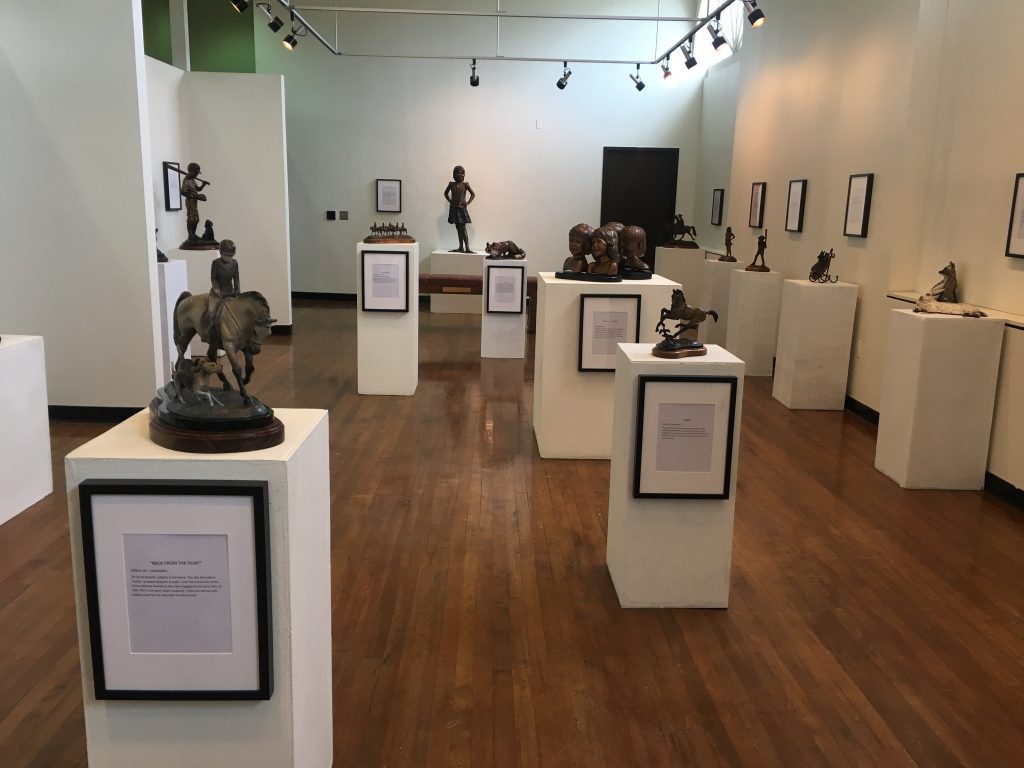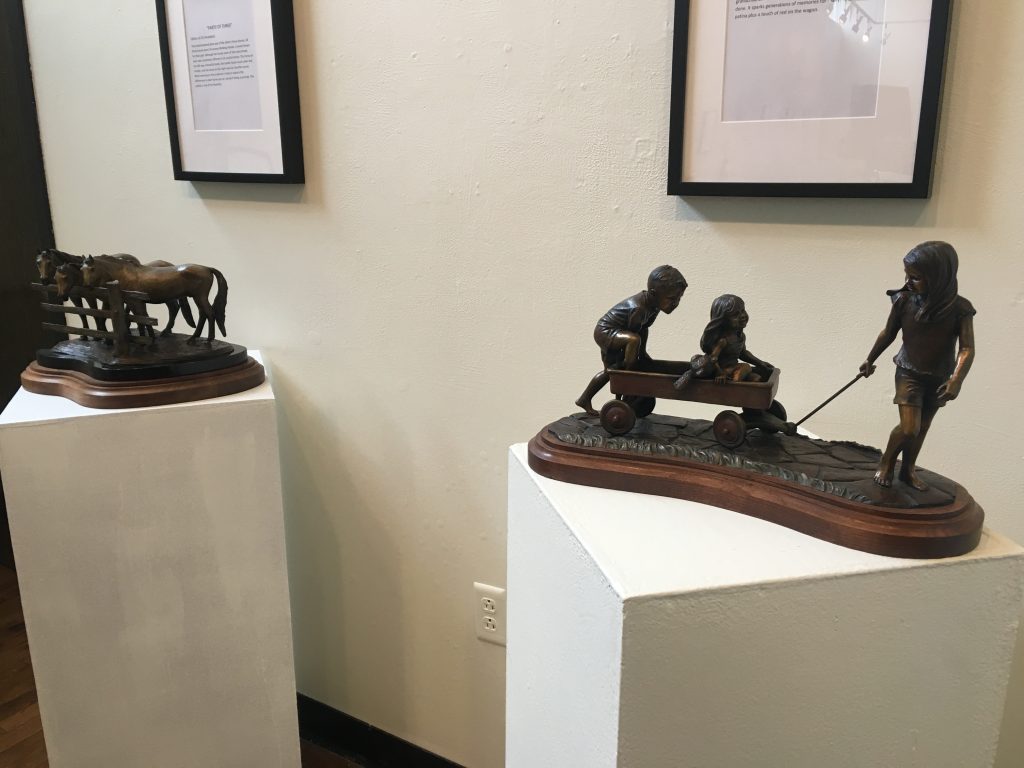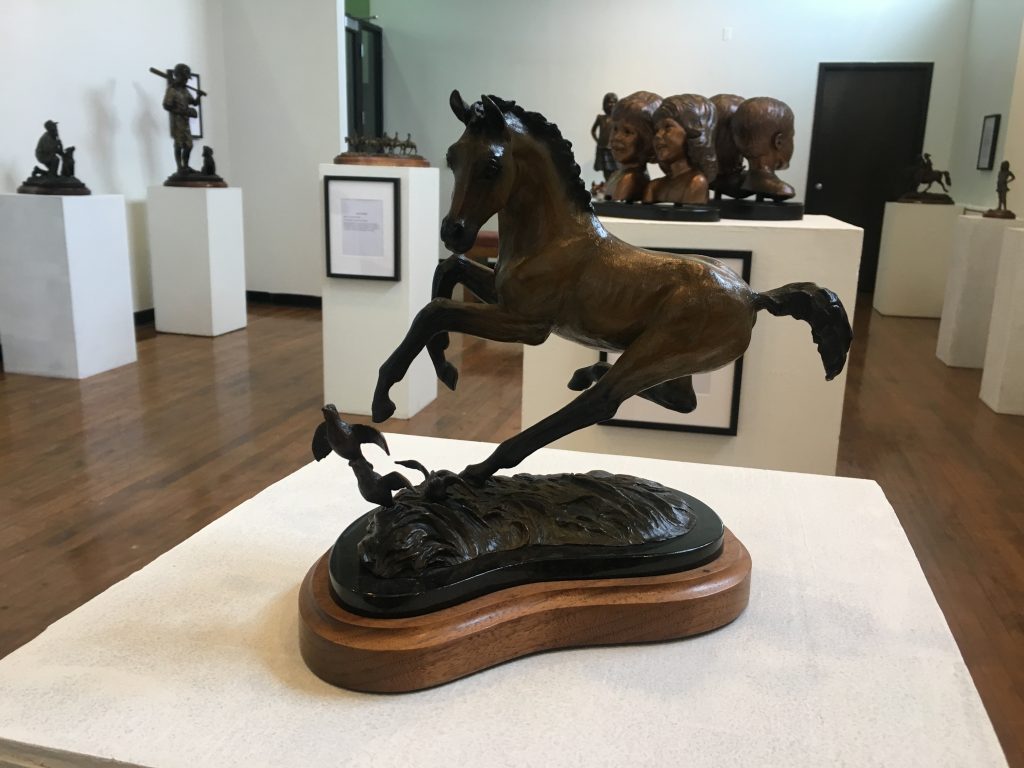
Photo by Cassie Hayes
Located in Brown Hall, the Stocksdale Gallery is currently featuring the work of sculptor Martha Aldridge.
“Creating a sculpture begins with an inspiration, a vision, or an assignment or commission,” Aldridge said.
A Missouri native, Aldridge’s bronze works often depict her favorite subjects – horses and children. “Pony Tails” was her first bronze piece. Taken from

Photo by Cassie Hayes 
Photo by Cassie Hayes
“Having always loved working with my hands building and carving things, my sculpture interest grew and I began taking sculpture classes and learning about the process of creating a bronze,” Aldridge said when asked how she began what drew her to the medium.
Aldridge was an art teacher in the public school system for more than 30 years. She took up sculpting after retiring.
“To begin a sculpture, an idea is formed either in my mind, on paper or by building a small maquette,” Aldridge said.
A maquette functions as a sculptor’s rough draft, often used to test ideas and shapes. Unlike finished pieces, maquettes are interesting because they convey the artist’s first thoughts and interpretations of the subject.
The next step in the building process is constructing an armature, the framework that gives structure and support to the rest of the sculpture.
“An armature is built using plumbing pipe and wire with the addition of foil or other materials to build bulk,” Aldridge said. “The clay is then pressed over the armature and the real sculpting process begins.”
Aldridge noted that ensuring this armature is properly supported is the most difficult aspect of creating her sculptures.
Many of Aldridge’s works are commissions – she is responsible for creating specific pieces based on what her client desires.
“As with the Lawrence ‘China’ Slaughter Memorial sculpture, I knew after speaking to members of the art council, they wanted a compassionate man with school children,” Aldridge said.
The commissioned sculpture honors a beloved Liberty, Missouri, resident, Lawrence “China” Slaughter, who served as a crossing guard and custodian for Franklin Elementary for more than 40 years before retiring in 1984. The memorial depicts the late Slaughter in his role as

Aldridge acknowledged that her proudest moment as an artist was installing this sculpture. A maquette is on display in the gallery, but the actual memorial is local and resides in a pocket park near the Liberty Square.
“This is the largest sculpture I have completed, and I’m so blessed to have been chosen for this project,” Aldridge said.
Aldridge’s favorite small piece, “Back from the Hunt,” is also her most recent. The sculpture includes a horse and rider accompanied by two hounds.
“I love the interaction of the horse with the hounds as the rider engages the horse to stay on task,” states the description beneath the sculpture.
What I found most alluring about Aldridge’s work was the subtle variety. While the subject matter is often the same, each piece has its own character. The most notable difference is size, as the sculptures range from small door knockers to life-sized renderings of children. If you look closely, not even the bronze coloring is the same. Some sculptures are lighter, darker or redder than others.
My favorite piece from the gallery is “Bring it On,” which depicts a young girl with her hands on her hips. Aldridge did a remarkable job portraying the girl’s confidence, and the sculpture somewhat resembles the “Fearless Girl” statue that stood across from the Wall Street Bull.
